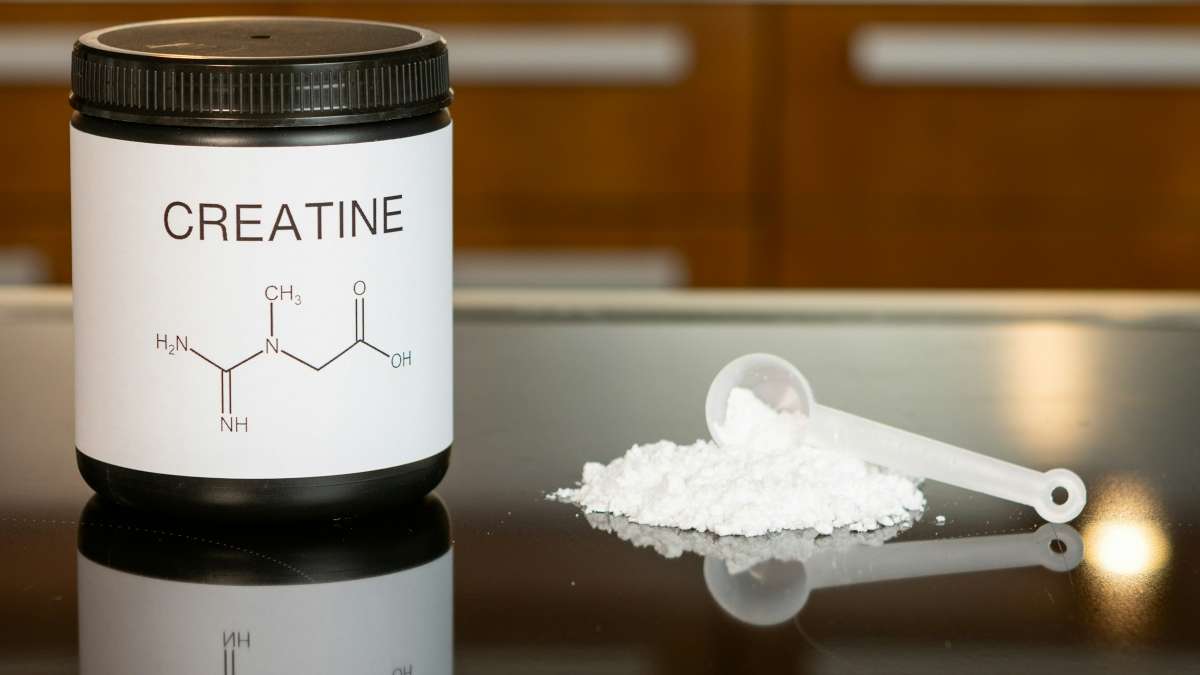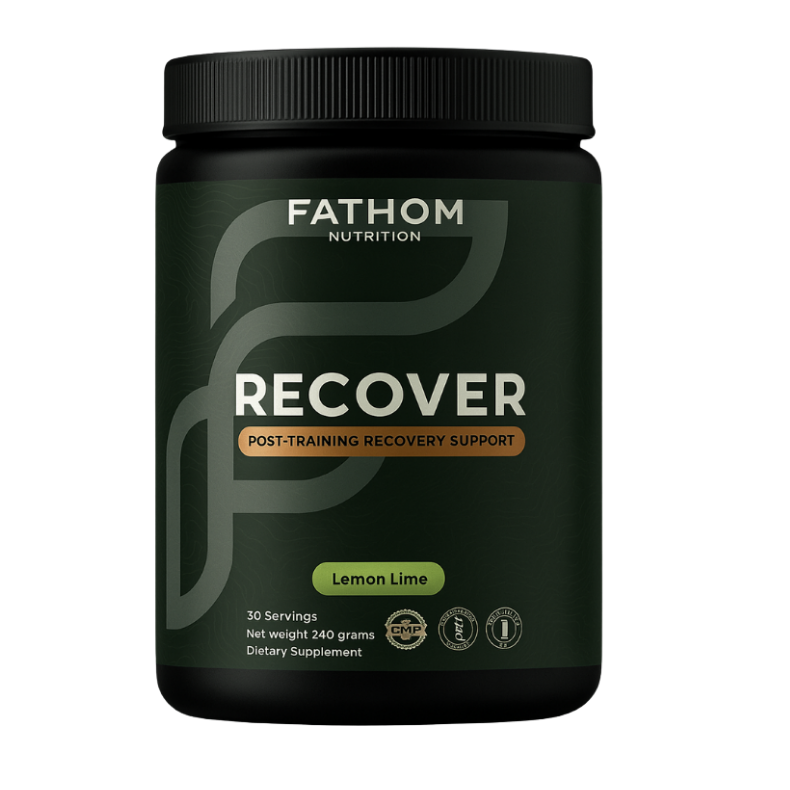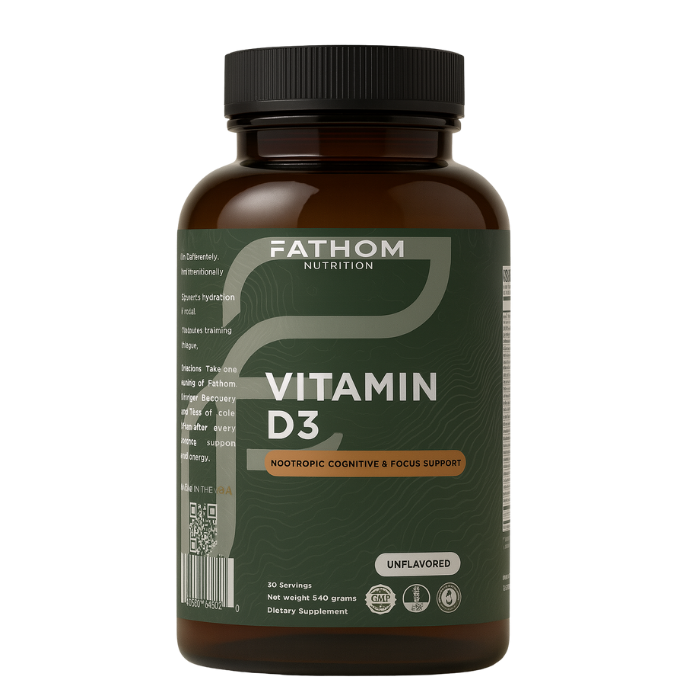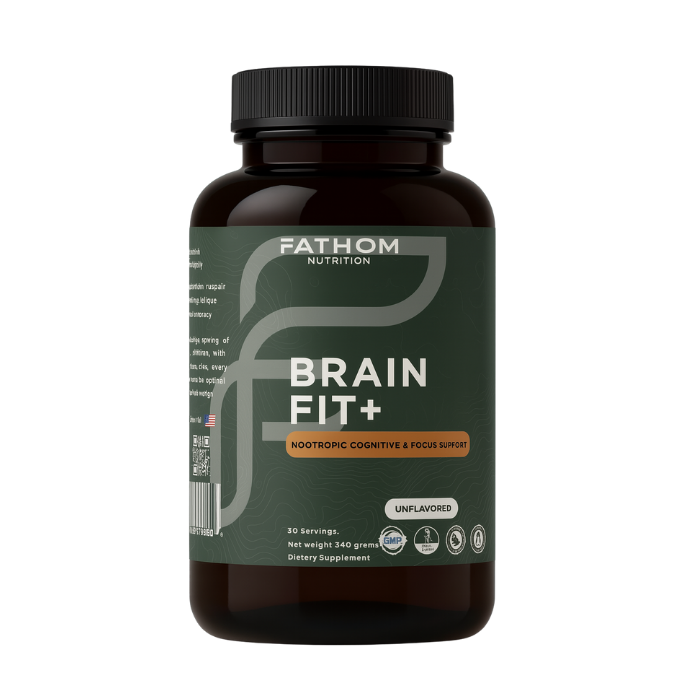The Complete Scientific Guide to Creatine: Mechanisms, Dosing, Safety, and Real-World Performance

Creatine is the most extensively researched ergogenic nutrient in sport. When used properly, it enhances high-intensity work capacity, supports increases in maximal strength and lean mass, and often improves the quality of training itself. It also appears to confer benefits beyond muscle, including emerging evidence for cognition under stress and sleep loss. The science is deep, the protocols are straightforward, and the safety profile in healthy adults is consistently strong when taken at recommended doses. BioMed Central+1
This guide translates the literature into clear, field-tested decisions: how to load or slow-fill, how to time it relative to training, what to expect for strength and power, where endurance athletes benefit, what the evidence says about the brain, and how to address persistent myths about kidneys, dehydration, hair, and cramping. It finishes with simple protocols you can implement immediately, plus a recovery ritual that keeps execution consistent.
Fathom Nutrition Creatine is sourced from the highest-quality, purest micronized creatine monohydrate (200 mesh). Our creatine is single sourced creatine and contains no additives, sweeteners, or fillers. Its Non-GMO, Gluten Free, Dairy Free, and Vegan. Fathom Creatine delivers 5 grams of 100% micronized creatine monohydrate, with no additives or artificial ingredients. Just the raw fuel your body needs to train harder, recover faster, and build more muscle—day after day, rep after rep.
1) What creatine actually does
Cellular energy and performance
Creatine is phosphorylated in muscle to phosphocreatine, which buffers adenosine triphosphate during high-power efforts. By accelerating ATP resynthesis between contractions and sets, it lets you perform more total work at a given intensity. Over weeks, this translates into greater strength and hypertrophy when training is well structured. Position statements and consensus papers consistently list creatine as a top-tier ergogenic for strength and power sports. BioMed Central+1
The training quality effect
Creatine’s most practical benefit may be session quality. Being able to complete one more high-quality rep or maintain velocity across sets aggregates into superior adaptations. Meta-analyses report greater increases in one-repetition maximum and multi-joint strength when creatine accompanies resistance training compared with placebo. MDPI
Beyond muscle: the brain
The brain uses ATP intensely during sustained cognitive demand. Creatine is transported across the blood-brain barrier and can raise brain creatine content. Systematic reviews suggest small to moderate benefits in domains such as memory, attention, and processing speed, with effects more apparent under sleep loss, high stress, or in older adults. Results in young, well-rested adults are more variable and likely task dependent. PMC+2Frontiers+2
2) Forms and why “monohydrate” remains the reference
Dozens of creatine forms are marketed, but creatine monohydrate remains the reference because it is stable, cost-effective, and repeatedly validated across hundreds of trials. Alternative salts or esters have not demonstrated clear superiority in performance outcomes or tissue uptake when tested head-to-head at matched doses. For most athletes, monohydrate is the right call. BioMed Central
3) Dosing strategies: loading vs. slow-fill
You can saturate muscle creatine quickly with a brief loading phase or more gradually with daily low doses.
-
Classic loading: ~20 grams per day divided into 4 doses for 5–7 days, then 3–5 g/day to maintain saturation. This approach reaches peak tissue levels within about a week. Taylor & Francis Online+1
-
Slow-fill: 3–5 g/day without loading reaches similar saturation in roughly 3–4 weeks. If you are not facing an imminent competition, this is simple and well tolerated. ScienceDirect
For athletes on a schedule, loading is efficient; for everyone else, slow-fill works fine.
4) Timing: does it matter?
Creatine is not acutely stimulatory like caffeine; its primary mechanism is saturating stores. That said, there is evidence that post-exercise ingestion may offer a small edge in body-composition outcomes and strength when paired with carbohydrate and protein, likely by leveraging increased blood flow and insulin-mediated transport. If timing is convenient, take creatine with your post-training meal or shake. If not, take it at any consistent time you adhere to—daily consistency beats perfect timing. PubMed
Practical habit: anchor your dose to a repeatable recovery routine—fluids and electrolytes immediately after training, then protein, carbohydrate, and creatine together. Many athletes use RecoverFIT to rehydrate and restore sodium first, then mix creatine into their shake or take it with the post-training meal.
5) What to expect in the gym and on the field
Strength and hypertrophy
Meta-analyses and controlled trials show that creatine supplementation alongside resistance training yields larger gains in maximal strength and more lean mass than training alone. Expect changes to emerge over weeks, not days, and to be most obvious in multi-joint lifts with repeated set structure. MDPI
Sprinting and repeated efforts
Creatine helps maintain peak power across sprints, repeated jumps, and short intervals by buffering ATP between efforts. Sports with frequent accelerations or short-burst sets often see the greatest practical benefit. BioMed Central
Endurance athletes
Endurance athletes can benefit during high-intensity surges, finishes, hill attacks, or strength sessions that support durability. Note that early weight gain from increased intracellular water and glycogen can modestly affect weight-bearing economy; most runners adapt within weeks. Creatine’s role for long steady work is minimal, but for repeated hard surges it can be decisive. British Journal of Sports Medicine
Cognition under load
When sleep is short or cognitive demand is sustained, creatine may help preserve working memory and processing speed. Older adults and individuals on plant-forward diets may see larger effects. Results are mixed in young, fully rested participants, which likely reflects task selection and ceiling effects. PMC+1
6) Safety: kidneys, liver, hydration, and cramping
Kidney and liver function
For healthy adults, randomized and controlled human studies repeatedly report no clinically significant adverse effects on renal or hepatic panels at recommended doses over months to a year. Acute rises in measured GFR with high protein or creatine reflect physiology under load, not damage, in healthy kidneys. People with diagnosed chronic kidney disease must follow medical guidance and are a separate population from athletes. PMC+2ScienceDirect+2
Hydration and cramping myths
Creatine does not inherently dehydrate you. In fact, it tends to increase intracellular water. Reports of cramping are inconsistent and confounded by heat, electrolytes, and training volume. Standard advice applies: hydrate deliberately and include sodium when you sweat heavily or train in heat. A simple way to standardize this habit is to begin recovery with RecoverFIT after hard sessions. BioMed Central
Weight gain
Expect 1–2 kilograms of early body mass gain during loading due to increased intramuscular water and glycogen. This stabilizes and does not signal a negative health effect. For weight-class sports, time loading to off-season or slow-fill across a month.
Hair loss
The idea that creatine causes hair loss arose from a small trial showing increased serum DHT in rugby players. Subsequent evidence has not established a causal link between creatine and male pattern hair loss. Genetics and androgen sensitivity dominate risk. The totality of data does not support avoiding creatine on this basis. BioMed Central
7) Special populations and contexts
Older adults and sarcopenia
Creatine plus resistance training helps older adults gain or preserve lean mass and strength, with possible cognitive support. Dosing and safety are similar to younger groups, though medication review and clinician oversight are prudent. BioMed Central
Plant-forward diets
Creatine is found in animal foods; strict vegans often have lower baseline stores and may see larger relative benefits from supplementation, including in cognition studies. Standard dosing applies. PMC
Women
Women respond to creatine similarly to men for strength and lean mass. No unique safety concerns have emerged at recommended doses. As always, coordinate with a clinician if pregnant or breastfeeding. BioMed Central
Team sports and mixed-modality events
Repeated sprints, jumps, and changes of direction benefit from phosphagen support. Combine creatine with targeted buffering strategies for specific events when appropriate, and keep hydration and carbohydrate plans consistent on high-intensity days. British Journal of Sports Medicine
Fathom Nutrition Creatine is sourced from the highest-quality, purest micronized creatine monohydrate (200 mesh). Our creatine is single sourced creatine and contains no additives, sweeteners, or fillers. Its Non-GMO, Gluten Free, Dairy Free, and Vegan. Fathom Creatine delivers 5 grams of 100% micronized creatine monohydrate, with no additives or artificial ingredients. Just the raw fuel your body needs to train harder, recover faster, and build more muscle—day after day, rep after rep.
8) Stacking creatine with other evidence-based supports
-
Protein and carbohydrate: Creatine works best on the back of high-quality training and adequate daily protein. Pairing creatine with a protein- and carbohydrate-containing meal post-training is practical and may favor body-composition outcomes. PubMed
-
Caffeine: Compatible. Some individual reports suggest acute jitter or GI issues when combined pre-event; most athletes tolerate both when caffeine is kept in the 3–6 mg/kg range and creatine is taken daily rather than acutely pre-event. British Journal of Sports Medicine
-
Buffers (beta-alanine, sodium bicarbonate): These target different mechanisms. Use strategically for events with sustained severe intensity or repeated two- to four-minute efforts while keeping creatine as a steady background. British Journal of Sports Medicine
-
Hydration and electrolytes: Keep recovery friction-free—take your daily creatine dose with fluids and electrolytes right after training. Many athletes standardize with RecoverFIT then eat the post-workout meal.
9) Quality, purity, and certification
Creatine is simple, but quality still matters. Choose products from manufacturers that follow current Good Manufacturing Practice and consider third-party certifications when you need the lowest risk profile.
-
IOC consensus places creatine among a small set of supplements with meaningful evidence when used appropriately. British Journal of Sports Medicine
-
Look for transparent labels and, if you compete under anti-doping rules, products that undergo batch-specific testing for contaminants and prohibited substances. British Journal of Sports Medicine
If you are building a full recovery stack, keep it minimal and consistent. A daily creatine dose plus a reliable post-workout hydration habit (electrolytes first, then protein and carbohydrate) covers most of what matters.
10) Practical protocols
A) Slow-fill protocol (simple and effective)
-
Dose: 3–5 g creatine monohydrate once daily with a meal or post-training shake.
-
Timing: Any time you consistently remember; post-exercise with protein and carbohydrate if convenient. PubMed
-
Expectations: Tissue saturation in ~3–4 weeks; steady improvements in training quality.
B) Loading protocol (fast saturation)
-
Days 1–5/7: 20 g/day split into 4 × 5 g doses with food and fluids.
-
Then: 3–5 g/day maintenance. Taylor & Francis Online
-
Tip: If GI sensitivity occurs, reduce individual bolus size and take with meals.
C) Strength block emphasis
-
Daily: 5 g creatine, post-lift with protein and carbohydrate.
-
Recovery: Standardize with electrolytes immediately after training—RecoverFIT—then creatine plus protein and carbohydrate in the next meal or shake.
D) Endurance with surges
-
Daily: 3–5 g.
-
Note: Begin at least 3–4 weeks before racing if using slow-fill so you adapt to small body mass changes; time hard interval sessions later in the day if you prefer post-exercise dosing.
E) Cognitive stress periods (travel, shift work, exam weeks)
-
Daily: 3–5 g.
-
Context: The literature suggests potential cognitive benefits under sleep restriction or sustained demand; keep expectations realistic in well-rested young adults. PMC
11) Troubleshooting and FAQs
I feel puffy after starting creatine.
Short-term water retention inside muscle is normal and performance-positive. It generally stabilizes within 1–2 weeks. Reduce loading speed or use slow-fill if this bothers you.
I cramp in the heat—is creatine the cause?
Evidence does not support creatine as a cause of cramping. Audit sodium and fluids and consider anchoring a post-training electrolyte habit. BioMed Central
I missed a few days—do I need to reload?
No. Resume 3–5 g/day. If you stopped for several weeks, a brief 3–4 day top-up at 10 g/day can speed the return to saturation.
Is there any reason to cycle off?
Not for healthy adults at standard doses. Long-term studies show good tolerance. If you prefer to cycle, taper to maintenance rather than stopping in the middle of a heavy training block. PMC
Does creatine hurt kidneys?
In healthy adults, clinical markers remain within normal ranges in controlled trials up to a year at recommended doses. People with kidney disease require medical oversight. PMC+1
Can teenagers use creatine?
Discuss with a clinician, coach, and guardian. Research in adolescent athletes is smaller but generally reassuring under supervision, structured training, and diet sufficiency. Emphasize whole foods and coaching fundamentals first. BioMed Central
12) Simple implementation plan for teams and coaches
-
Add “Creatine 5 g daily” to the team recovery checklist.
-
Bundle it with your electrolyte and protein routine after training to reduce misses—RecoverFIT first, then creatine plus protein.
-
Educate athletes about realistic timelines: weeks for effect, months for peak strength changes.
-
For anti-doping environments, keep a shortlist of batch-tested products and log lot numbers. British Journal of Sports Medicine
13) Bottom line
Creatine is simple, potent, and safe for healthy adults when used as directed. Choose creatine monohydrate, pick either loading or slow-fill, and tie your daily dose to a post-training ritual you never skip. Over time, expect more high-quality reps, better strength outcomes, and improved repeated-sprint capacity, with possible cognitive benefits when stress or sleep loss run high. Keep your stack humble: creatine, adequate daily protein, well-timed carbohydrate, and a reliable hydration habit will carry you farther than any exotic supplement.
References (representative)
-
International Society of Sports Nutrition Position Stand: Safety and efficacy of creatine in exercise, sport, and medicine. J Int Soc Sports Nutr. 2017. Strong evidence across performance and safety. BioMed Central
-
IOC Consensus Statement: Dietary supplements and the high-performance athlete. Int J Sport Nutr Exerc Metab. 2018. Lists creatine among supplements with meaningful evidence when used appropriately. British Journal of Sports Medicine+2PubMed+2
-
Safety reviews in trained adults: controlled trials and recent analyses indicate no clinically significant adverse effects on renal or hepatic markers at recommended doses. PMC+2ScienceDirect+2
-
Dosing and protocols: loading versus maintenance and slow-fill strategies summarized in recent narrative and scoping reviews. Taylor & Francis Online+1
-
Strength and hypertrophy outcomes: meta-analysis showing greater increases versus placebo when combined with resistance training. Nutrients. 2024. MDPI
-
Cognition: systematic reviews suggest benefits under stress and sleep loss, with mixed results in well-rested young adults. Front Nutr. 2024; PMC 2024. Frontiers+2PMC+2












